Who remembers the comic strip Thimble Theatre? Did anyone’s hand go up?
If you’re over 104, it could be that you saw the first appearance of “Thimble Theater” in the December 19, 1919, edition of William Hearst’s New York Journal. If you’re somewhat younger, you may remember that after nine years, the “Thimble Theatre” comic strip was renamed “Popeye the Sailor Man” on January 17, 1929.

The original comic was drawn and written by Elzie Crisler Segar. It is unknown what his mother called him, but everyone else called him, “E. C.” or “Ecee.” Segar was born on December 8, 1894, in Chester, Illinois. Quite early in life (around age 12), E. C. began to demonstrate a talent for drawing and began his career as a cartoonist for the Chicago Herald in 1910 at age 16.
The primary focus of Thimble Theatre was the life and adventures of the Oyl Family. There was Olive Oyl and her brother Castor Oyl, and their extended family. Life went on for the Oyls until the introduction of a new character – Popeye the Sailor Man – in 1929. Olive became Popeye’s love interest and that would change the course of the strip forever.
Popeye the Sailor, with his trademark corncob pipe, was a tough sailor with spinach-fueled muscles, and a distinctive voice who was always the central character in an amazing adventure. Popeye’s antics often included his arch-rival, Bluto, who added depth and humor to the storyline. Many of the storylines concerned Popeye’s efforts to save Olive Oyl from silly predicaments and Bluto’s attempts to thwart him.
One of the most memorable aspects of the Popeye character was Segar’s bold and dynamic art style. All the characters were exaggerated yet expressive. Popeye had those squinty eyes and muscular forearms; Olive was fencepost skinny, but her brother had a potbelly. Since Segar’s backgrounds were so detailed and had such intricate line work there was always an element of whimsy and adventure. Additionally, Segar’s vibrant, humorous, and clever style of storytelling captured the imagination of readers for decades and helped solidify Popeye as a pop culture phenomenon.
As a young artist no one knew Segar’s name, but when he landed his job at the King Features Syndicate in 1919, where his early work included the comic strips Looping the Loop and The 5:15, it was not long before he became a household name.
When Popeye first appeared in the Thimble Theatre comic strip, he was a minor character in a storyline featuring Olive Oyl and her boyfriend, Ham Gravy. However, Popeye quickly stole the show with his brash personality and incredible strength that endeared him to readers of all ages.
The Popeye strip, through the years featured an odd-ball cast of characters and an endless supply of wacky adventures that included battles with pirates to assuage Popeye’s fearless nature and unwavering sense of justice.
Another of the many enduring elements of the Popeye comic was the love triangle between Popeye, Olive Oyl, and the hapless Ham Gravy. Olive’s fickle nature and constant need for rescue provided plenty of opportunities for drama and humor. Popeye’s devotion to Olive was unwavering.
Sadly, Segar died young (age 43) on October 13, 1938.
***
In a somewhat surprising twist, the files here at Postcard History hold very few Popeye postcards. There are three that are likely from a set published by King Features Syndicate, all are copyright 1942. The others are promotion cards (advertisements) for products like watches and, believe it or not, postcards.
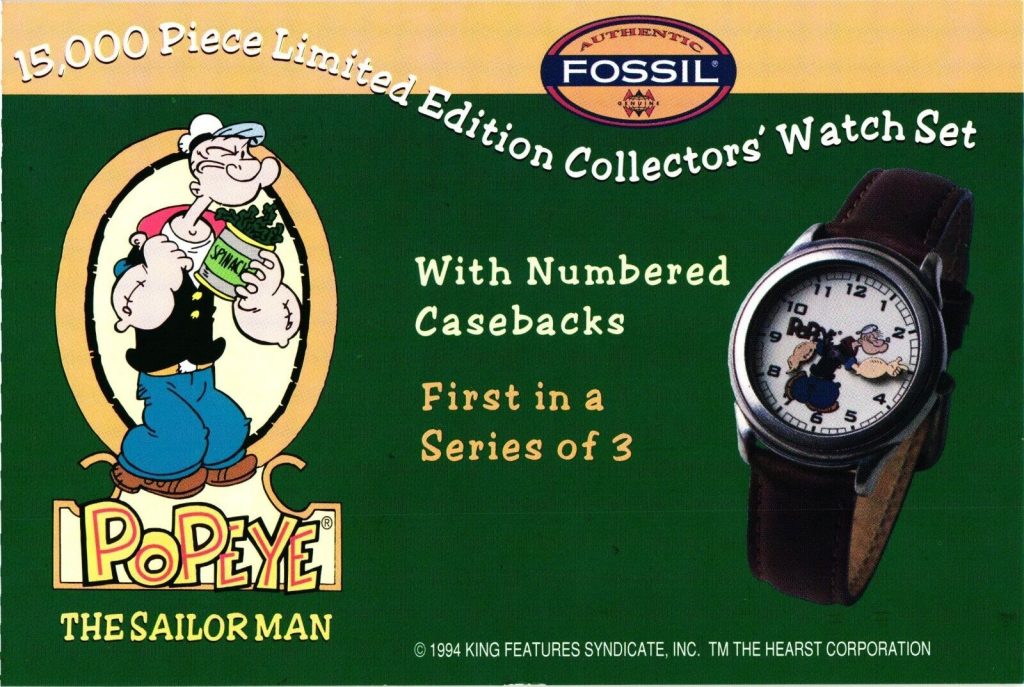
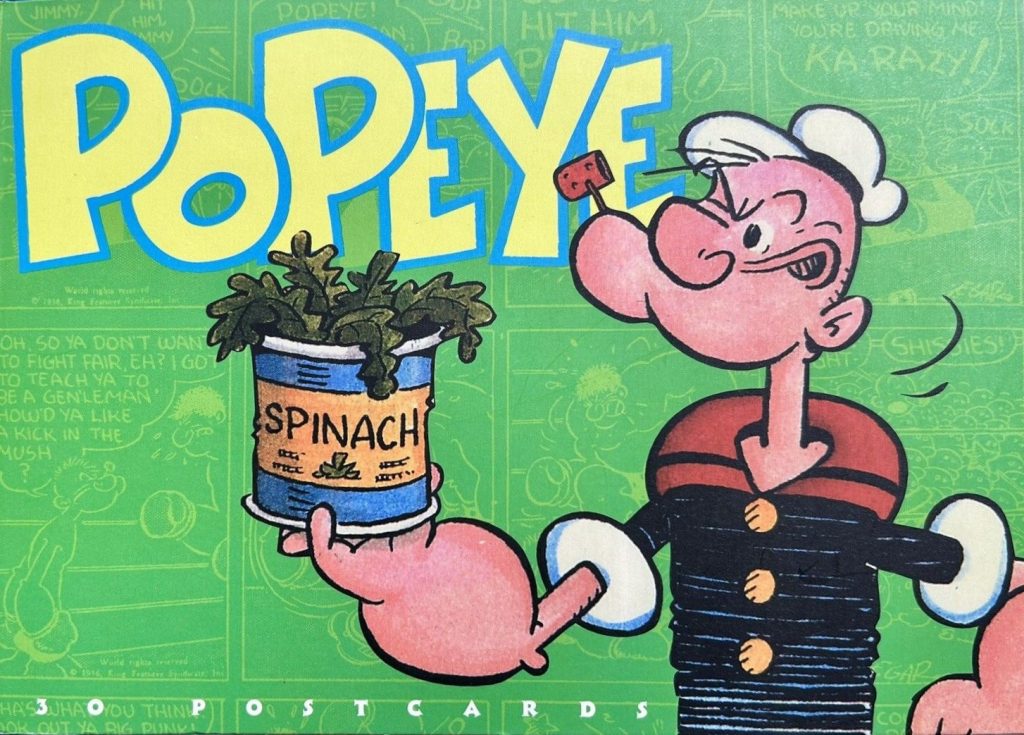
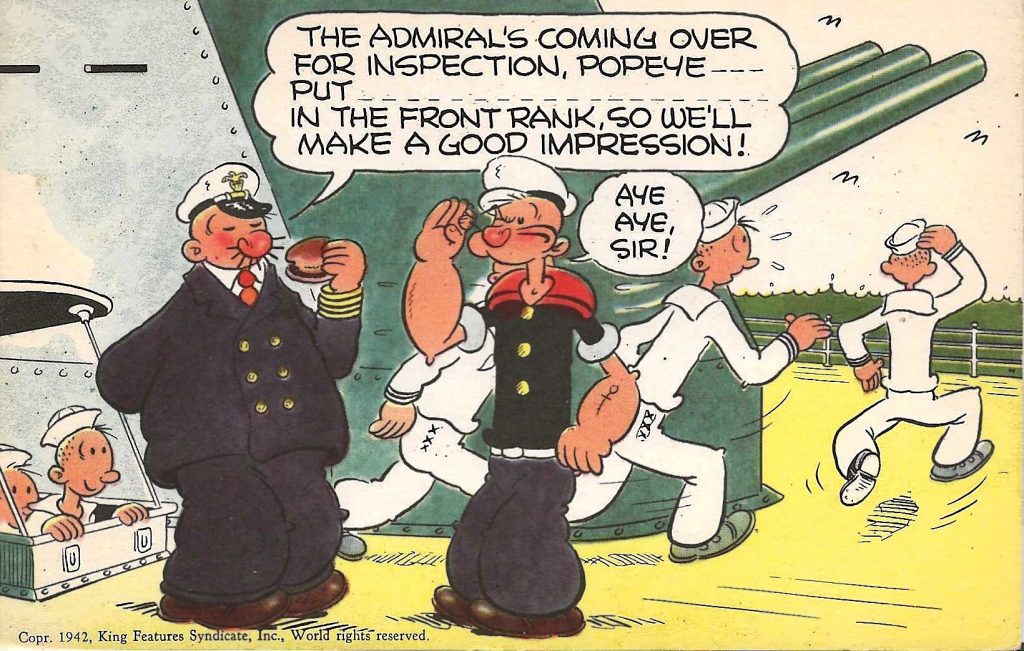
There is one remaining factor in the Popeye story – © Copyright.
In 2008 “Popeye” became public domain. Popeye’s image now belongs to the world, but if you want a piece of Popeye, it isn’t entirely straightforward. For instance, Popeye has already been in the public domain in Canada for 20 years because Canadian copyright law protects a creator’s work for just 50 years following death.
In the U.S., copyright law appears to protect creations even longer if they were done as works for hire. (Segar’s Thimble Theatre comic strip, which included Popeye, was drawn for the Hearst syndicate.)
Also, many of the sailor man’s animated adventures and modern re-imaginings are much younger and remain protected.
And if you do wish to make money with Popeye’s likeness, there are good reasons to expect a legal battle. The Times of London recently reported that Popeye comic books, cartoons, games, coloring books, board games, movies, and other merchandise generate about £1.8 billion (or $2.2 billion) in annual sales.
And, don’t forget, the expiration only covers the copyright, not the trademark. A particular image of Popeye might qualify as a trademark for a particular brand name used by some manufacturers. A trademark can be re-registered again and again and the difference between them and copyright often causes the kind of confusion that makes lawyers rich.
There are so many complications, Popeye would likely find it “disgustipating.”(1)
(1) Thank you, CBS News.
***
And then there is this. Only in Texas!
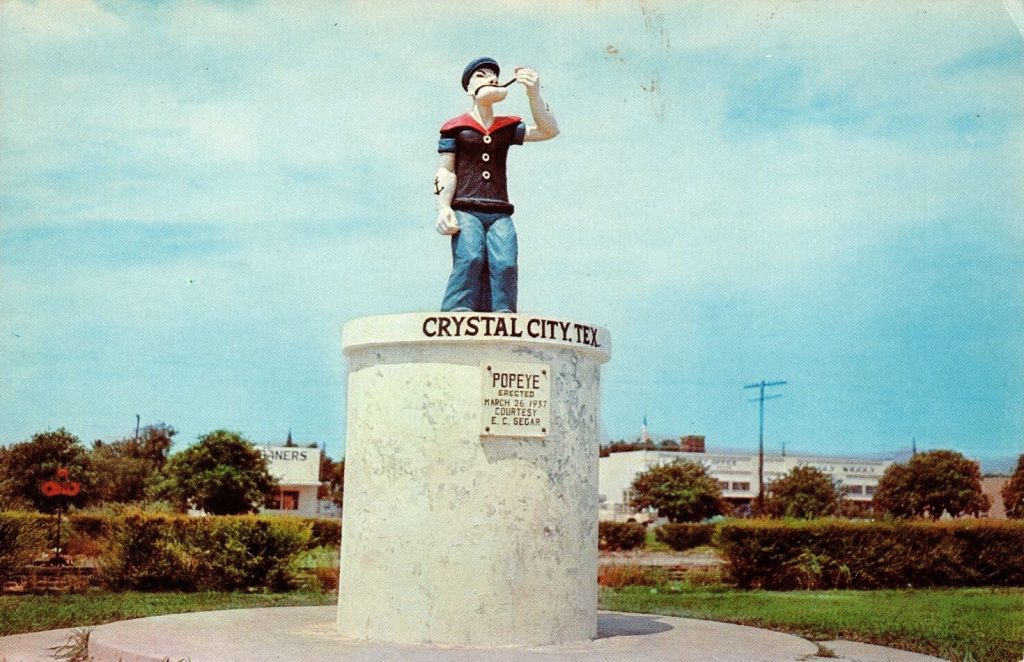
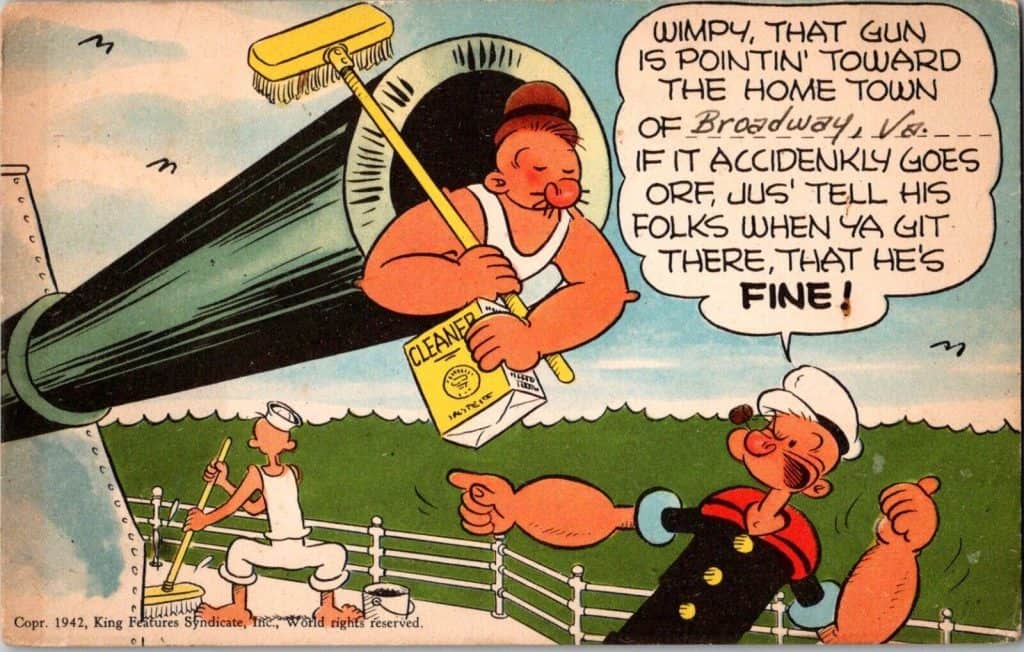
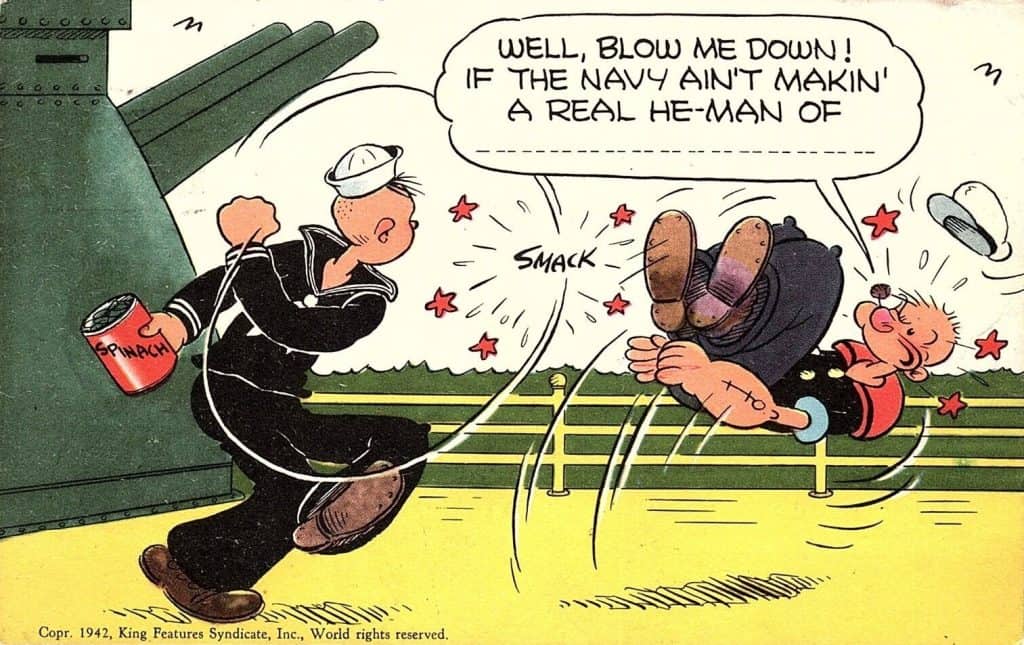
Excellent article. Do we know what connection Popeye has to Crystal City in Texas?
The city promotes itself as “Spinach Capital of the World”.
Always enjoy learning about the comic artists and their comic postcards. Thank you!
In my youth I always enjoyed a good Popeye cartoon. Didn’t know there were cards out there with him on them but then, there seems to be a postcard for just about everything.